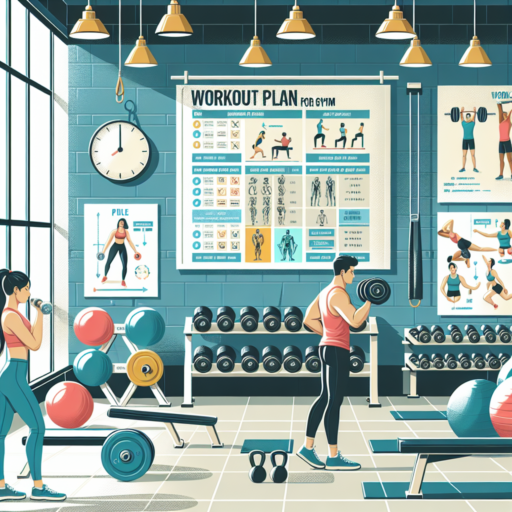Is a 45 minute cardio workout good?
Embarking on a 45-minute cardio workout can seem like a daunting task for many, but the potential health benefits it offers might make you reconsider. Cardiovascular activities, ranging from brisk walking to high-intensity interval training, are vital for heart health, weight management, and improving overall fitness levels. But is 45 minutes of cardio specifically beneficial?
Firstly, the American Heart Association recommends at least 150 minutes per week of moderate-intensity aerobic activity or 75 minutes per week of vigorous aerobic activity. Dividing this across the week, a 45-minute session fits comfortably within these guidelines, making it an effective strategy for those looking to meet or exceed their aerobic exercise recommendations. Notably, engaging in 45 minutes of cardio can significantly contribute to burning calories, which is integral for weight loss or maintenance.
Moreover, beyond just calorie burning, 45 minutes of cardiovascular exercise has been linked to improved mental health, including reduced stress and anxiety levels. This duration offers a sweet spot where you can immensely benefit from the endorphin release, often referred to as the ‘runner’s high’, without overexerting yourself.
How many calories do you burn in a 45 minute aerobic workout?
Estimating the number of calories burned in a 45-minute aerobic workout can vary significantly based on several factors. Primarily, it hinges on the intensity of the workout, the type of aerobic exercise performed, and the individual’s body weight. On average, an individual might burn between 300 to 600 calories during a 45-minute session. However, this is a generalized estimate, and the actual numbers can vary more specifically depending on these key influencing elements.
Intensity Levels Matter: When you dive into aerobic exercises, the intensity level plays a crucial role in determining calorie expenditure. High-Intensity Interval Training (HIIT) aerobic workouts, for instance, can lead to more significant calorie burn compared to moderate or low-intensity aerobic workouts. Additionally, exercises that involve the entire body or high levels of cardio can increase the rate at which calories are burned.
Considering Body Weight and Metabolism: Another pivotal factor is the individual’s body weight and metabolism. Those with higher body mass may find themselves burning more calories during the same workout intensity and duration compared to someone with a lower body mass. This is due to the increased energy required to move a larger body mass. Moreover, individual metabolic rates, which vary significantly from person to person, also impact the total calorie expenditure during aerobic workouts.
Is 45 minutes of cardio a day too much?
When pondering whether 45 minutes of cardio a day is too much, it’s essential to consider various factors such as your fitness level, goals, and the type of cardio exercise undertaken. For many individuals, especially those accustomed to regular physical activity, 45 minutes can be a sweet spot for reaping cardiovascular benefits without overtaxing the body.
Fitness Level and Cardio Goals
People new to exercise or returning after a significant break may find 45 minutes of cardio daily to be overwhelming. It’s crucial to build up endurance and strength gradually to prevent injuries and maintain motivation. On the other hand, for seasoned exercisers or athletes in training, 45 minutes of intensive cardio could be a key part of their regimen, helping to improve stamina, speed, and overall cardiovascular health.
Types of Cardio and Rest Days
The type of cardio exercise also plays a significant role in determining if 45 minutes a day is excessive. High-impact activities like running or HIIT might increase the risk of injury or burnout when performed daily for extended periods. Conversely, low-impact exercises such as swimming, cycling, or brisk walking could be sustainable, offering a balance between fitness gains and recovery. Incorporating rest days or lighter activity days is vital to allow the body to recover and prevent overtraining.
How to burn 500 calories in 45 minutes?
Burning 500 calories in just 45 minutes requires a combination of high-intensity workouts and strategic planning. One effective approach is incorporating interval training, which alternates between periods of intense activity and recovery. This method not only helps in maximizing calorie burn within a short period but also boosts your metabolism for hours after the workout.
Engage in High-Intensity Interval Training (HIIT)
High-Intensity Interval Training (HIIT) is a powerful tool to achieve this calorie-burning goal. HIIT sessions involve short bursts of intense exercise followed by brief rest periods. This could include activities like sprinting, jump rope, or circuit training. The key is to push your body to its limits during the intense phases, which greatly enhances the calorie-burning process.
Incorporate Compound Exercises
Another effective strategy is to incorporate compound exercises into your routine. These are movements that engage multiple muscle groups simultaneously, such as burpees, squats, and lunges. Compound exercises are not only efficient in burning calories but also help in building muscle, which in turn increases your resting metabolic rate. Including these exercises in your 45-minute routine can significantly contribute to reaching the 500 calorie target.
- Sprinting: Alternate 30 seconds of full effort with 30 seconds of rest.
- Jump Rope: Intervals of high speed for 1 minute followed by 30 seconds of rest.
- Circuit Training: Combine strength training with cardio by moving quickly between exercises with minimal rest.







